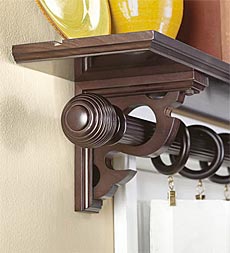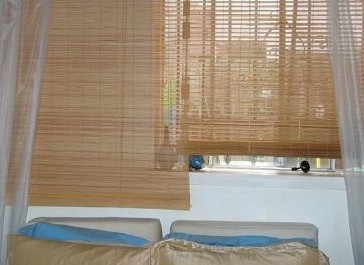When choosing a new mattress for your modern bed, start by evaluating the old one. Do you like the size? How about the support? Also consider the size, and sleeping or lounging habits, of the people who will be using the mattress. A comfortable bed begins with a comfortable, quality mattress and a good foundation, such as a box spring or raised platform.
Basically, there are two types of mattresses; innerspring and foam. Innerspring mattresses come in the same standard sizes as bed frames; king, queen, full (or double) and twin or (single). Innerspring mattresses are composed of springs connected in various ways: open springs, individual springs aligned in rows within the mattress; continuous springs, a network of connected wire instead of individual springs; and pocketed springs, with each spring enclosed in its own pocket. Pocketed springs are considered to be the best.
The comfort of an innerspring mattress is also greatly affected by its wire gauge and spring count. The lower the gauge of the wire, the stronger the coil. The heaviest, or strongest, you’ll find is 13, and 21 is the highest, or lightest. To determine whether a mattress has a good coil count, remember that twin mattresses should have more than 200 coils, and larger mattresses should have at least 300 coils. Also check the quality of the cushioning and insulation that are added. The more layers, the more comfortably you’ll sleep.
Foam, futons and waterbeds are alternatives to the traditional innerspring mattress. Consider a foam mattress if you need to fit an odd-size or antique bed. A foam mattress can be easily cut and tailored to fit almost any size or shape of frame. A good-quality foam mattress can be just as comfortable as an innerspring.
Originally from Japan, futons were first made of cotton batting inside a heavy fabric casing. Contemporary futons are essentially the same except they usually have an extra layer of foam or other padding for better durability.
Waterbed mattresses have improved dramatically; they now come with comfortable foam edges or use baffles to control wave motion. A “hard-side” model has a vinyl mattress, liner and heater encased in a frame. A “soft-side” waterbed looks just like an innerspring mattress. Soft-side waterbeds are usually composed of easy-to-fill tubes that sit side by side in an upholstered cover. A polyurethane liner is used to contain the water in case of a leak. Be sure the vinyl is at least 20 millimeters thick to protect the cover against leaks.
 Here is an idea of window treatment married a petite drapery to a display shelf. It appeared in a kitchen, but is here adapted to a bedroom.
Here is an idea of window treatment married a petite drapery to a display shelf. It appeared in a kitchen, but is here adapted to a bedroom.
 For an elegant but economical window treatment you can try to install matchstick blinds in a window frame and hung a pair of heavy starched white linen panels in front. Sunlight could slip through the matchstick blinds, hut when the linen drapery was drawn, the bedroom had privacy.
For an elegant but economical window treatment you can try to install matchstick blinds in a window frame and hung a pair of heavy starched white linen panels in front. Sunlight could slip through the matchstick blinds, hut when the linen drapery was drawn, the bedroom had privacy. It is surprising how many homes include a spare room that is kept like a shrine in a permanent state of waiting for someone to come and stayu, if your spare room is not occupied for more than a few nights a year, it could be put to better use as a study or playroom. You do not need to shun guests altogether - equip the space with a sofabed, which can provide sleeping space at short notice, and you will simply be getting double value out of a single room.
It is surprising how many homes include a spare room that is kept like a shrine in a permanent state of waiting for someone to come and stayu, if your spare room is not occupied for more than a few nights a year, it could be put to better use as a study or playroom. You do not need to shun guests altogether - equip the space with a sofabed, which can provide sleeping space at short notice, and you will simply be getting double value out of a single room. The traditional American bed
The traditional American bed Futon bed frames are usually made of wide wooden slats attached to a simple frame. The slats are spaced closely enough to keep the futon from sagging, and far enough apart to allow air to circulate around the mattress. Many futon bases double as sofa platforms as well.
Futon bed frames are usually made of wide wooden slats attached to a simple frame. The slats are spaced closely enough to keep the futon from sagging, and far enough apart to allow air to circulate around the mattress. Many futon bases double as sofa platforms as well.